The Galleria Spada, housed in the historic Palazzo Spada in Rome, is an art museum renowned for its collection of Baroque and Renaissance masterpieces. Palazzo Spada was originally constructed in 1540 for Cardinal Girolamo Capodiferro, a wealthy patron of the arts. In 1632, it was purchased by Cardinal Bernardino Spada, who transformed the building into a repository of fine art and commissioned major renovations to enhance its grandeur. The Spada family maintained the collection until the 20th century, when the Italian state acquired the palace in 1927, converting it into a public museum.
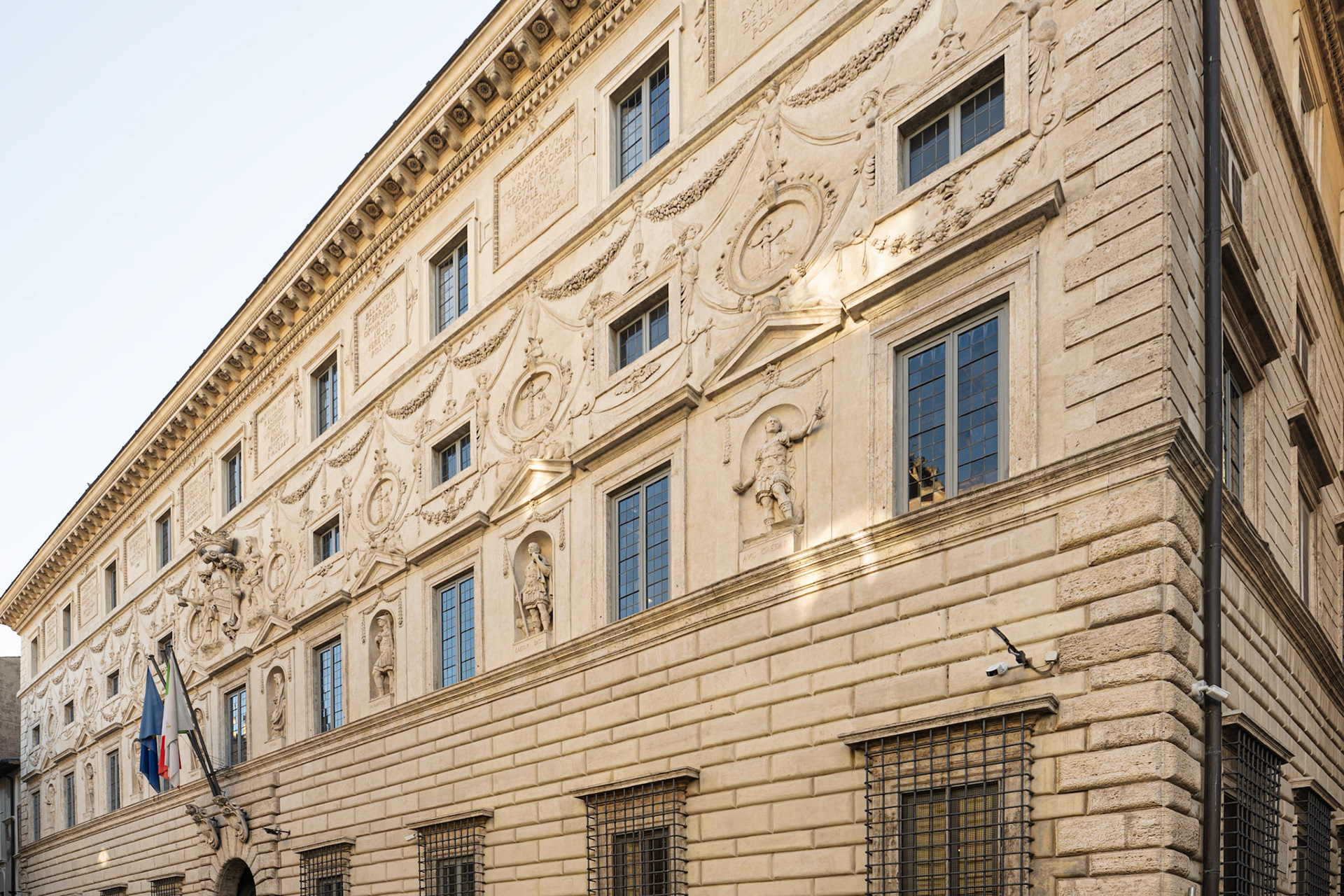
Galleria Spada - facade

Galleria Spada - entrance
The visit allows to discover four rooms inside the building, as well as the inner courtyard.
Room 1
Room 1 is part of the original mid-16th-century Palazzo. The current ceiling decoration is from 1777. The room houses two remarkable portraits: Cardinal Bernardino Spada, painted by Guido Reni in 1631 (center of the photo), and his great-nephew Cardinal Fabrizio Spada, painted by Sebastiano Ceccarini in 1754 (to the left of the photo).
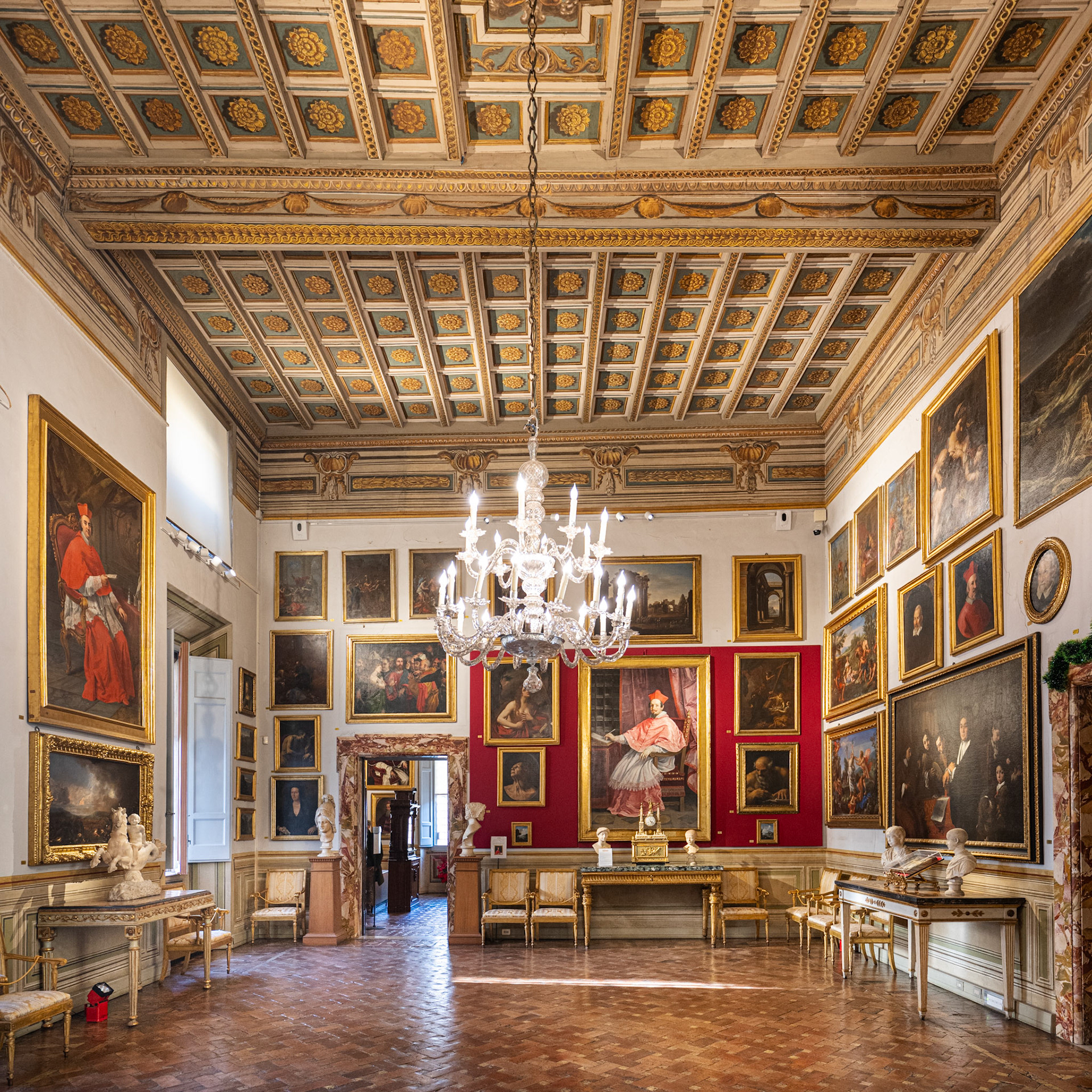
Room 1 with painting of Cardinal Bernardino Spada, Guido Reni (1631)
Room 2 - Studiolo del Cardinale
Room 2 is part of a new wing added in 1636–37. This intimate space originally served as the Studiolo del Cardinale (Cardinal’s private study). The frieze, a Renaissance masterpiece in tempera on canvas, features a long panel originally painted in the 16th century by Perin del Vaga for a tapestry intended for the Sistine Chapel beneath Michelangelo’s Last Judgment. Cardinal Bernardino acquired this work in Imola and had it reproduced across the walls of the studiolo. The French Baroque painter François Perrier recreated the central panel, while Andrea Gennaroli painted two copies of the frieze for the short walls in 1636, incorporating the Cardinal’s coat of arms featuring three swords.
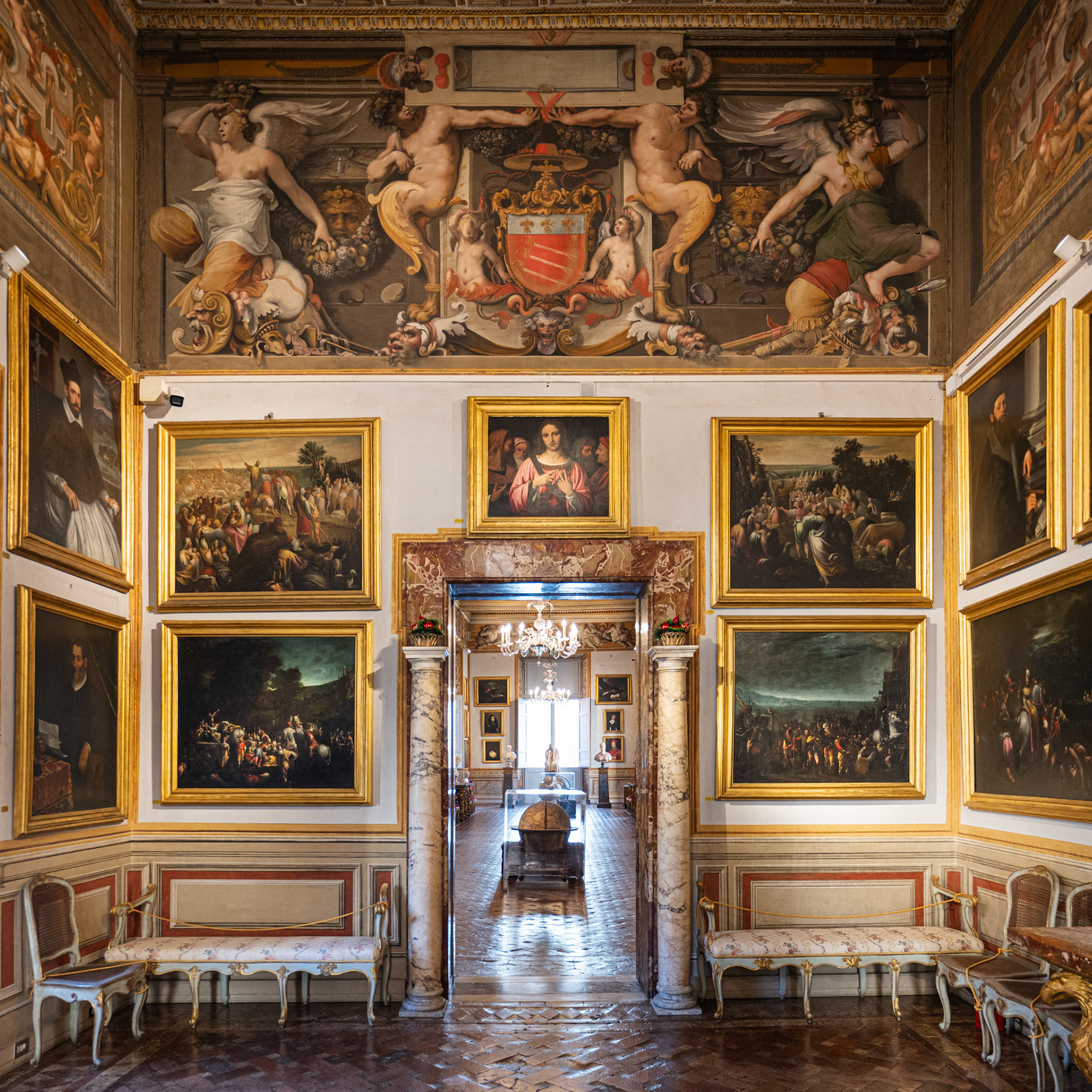
Room 2 with frieze by Andrea Gennaroli (1636)
Room 3 - La Galleria del Cardinale
Room 3, known as “La Galleria del Cardinale” (the Cardinal’s Gallery), was constructed in 1636–37 under Cardinal Bernardino Spada to house his art collection. Later, in 1698–99, Cardinal Fabrizio Spada oversaw a restructuring of the gallery. During this renovation, the ceiling was adorned with tempera paintings on canvas by Michelangelo Ricciolini. The terrestrial globe was created by Willem Blaeu in 1622.
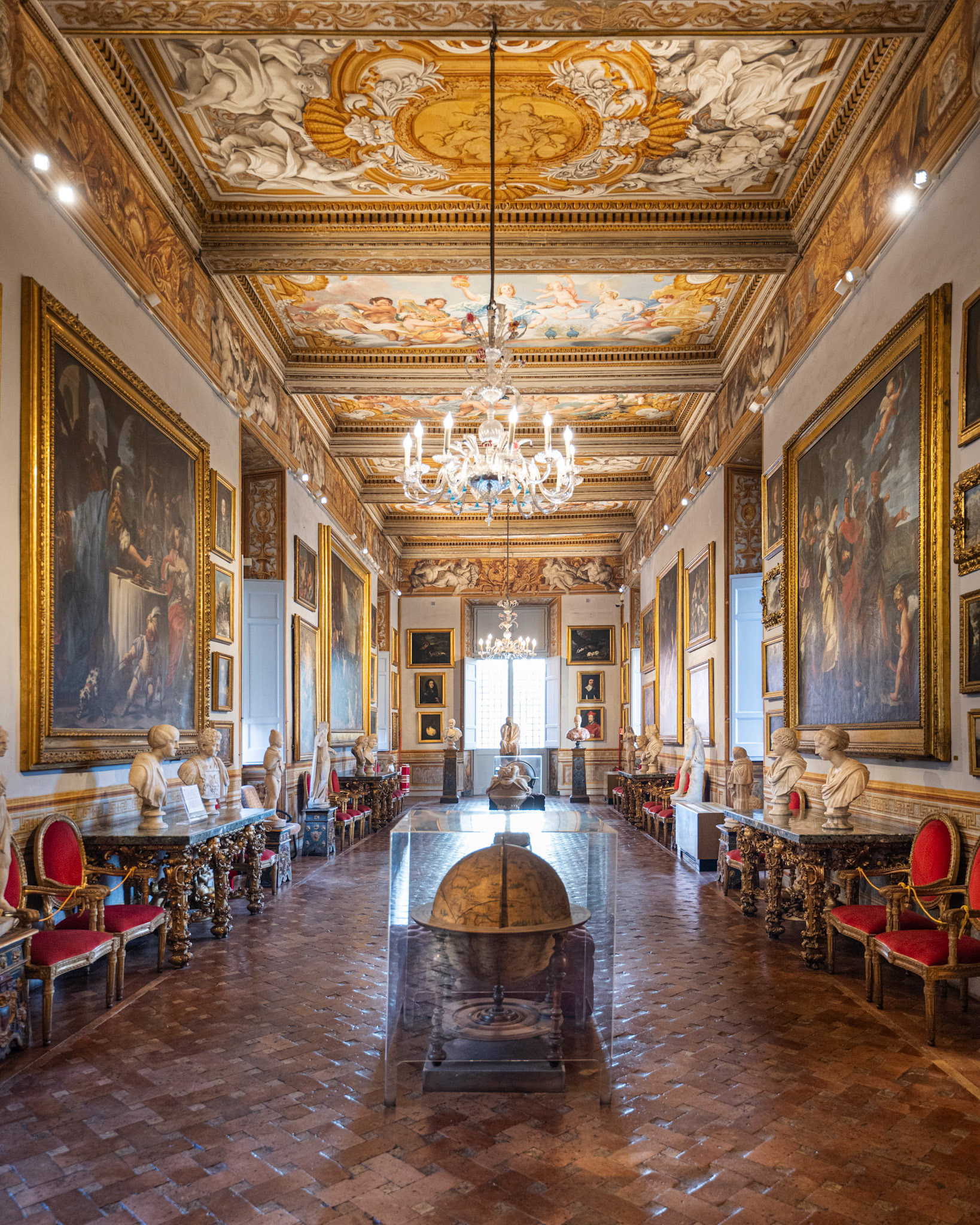
La Galleria del Cardinale
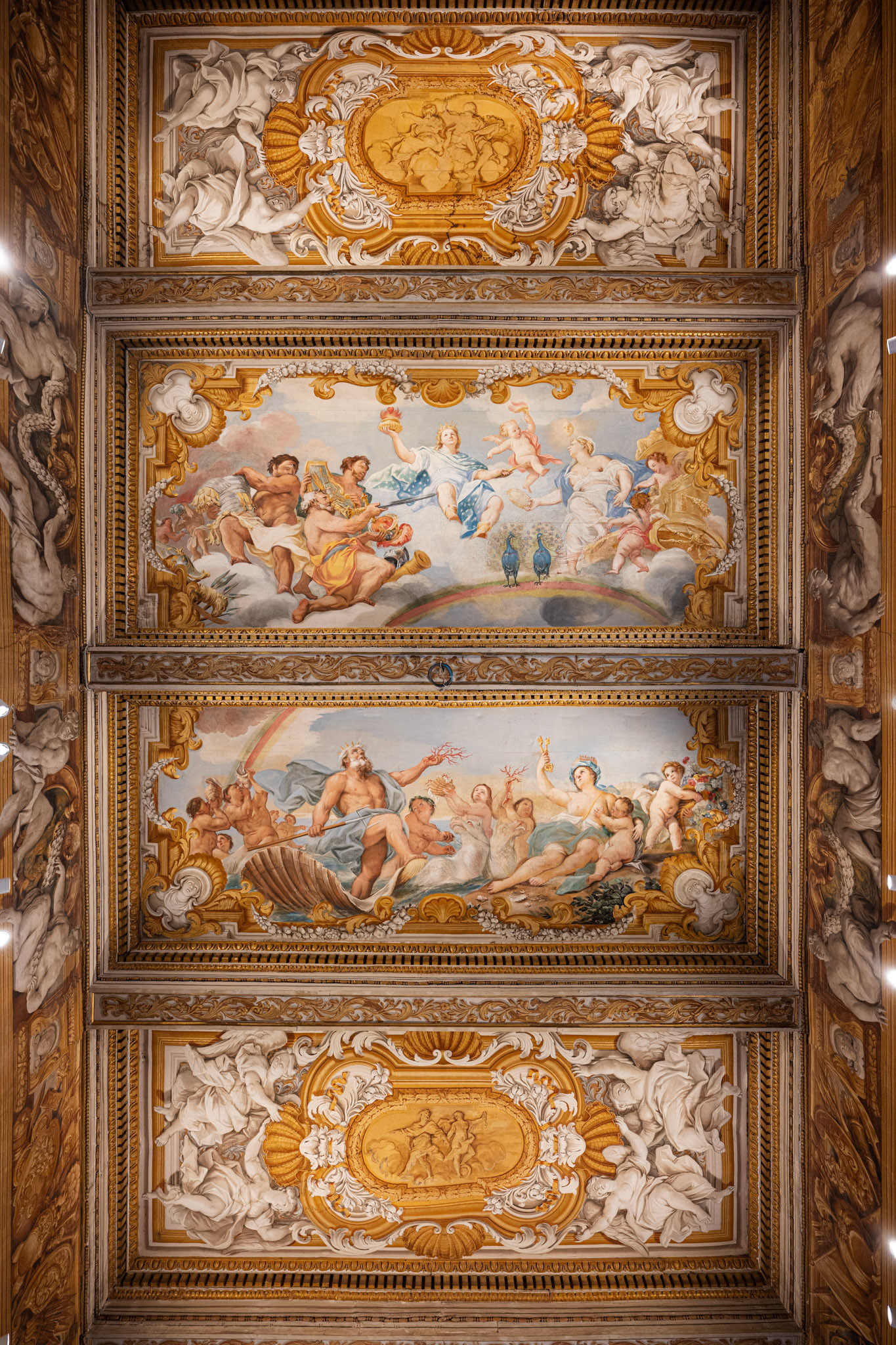
ceiling paintings by Michelangelo Ricciolini
Colonnade of Perspective
One of the most remarkable features of the Palazzo Spada is the Colonnade of Perspective, designed by Francesco Borromini in 1653. This architectural illusion, located in the courtyard, creates the impression of a long, 37-meter gallery, despite being only 8.82 meters in actual length. Borromini achieved this effect through the use of diminishing columns and a sloping floor, demonstrating his mastery of Baroque spatial manipulation.

Colonnade of Perspective, designed by Francesco Borromini in 1653
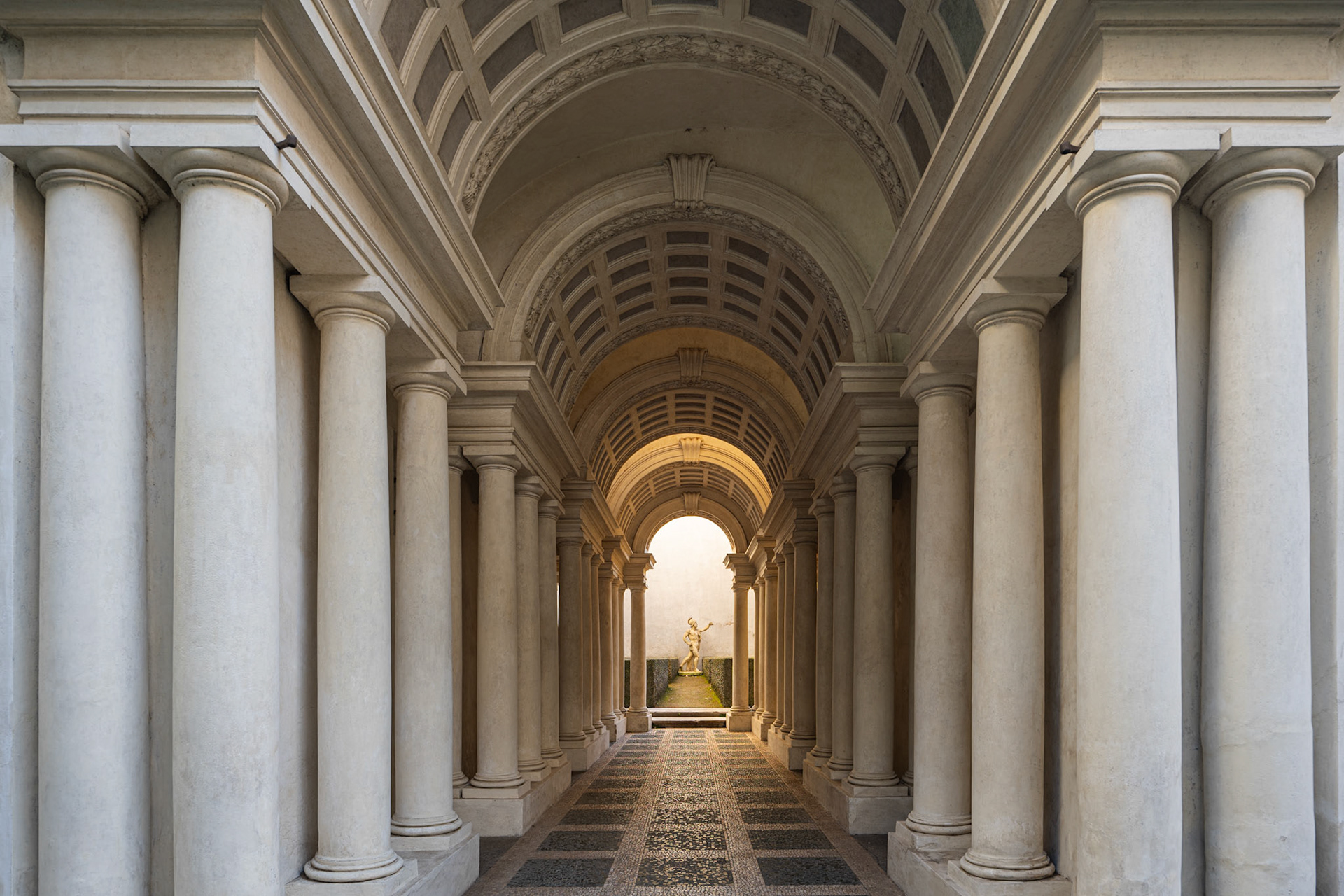
Colonnade of Perspective, designed by Francesco Borromini in 1653
You may also like